Electric Propulsion System
Inverter-Motor System
To increase the fidelity of electric propulsion system analysis module, models for pulse width modulation (PWM) inverter and permanent magnet synchronous motor (PMSM) have been developed based on an equivalent circuit. The improved module allows the efficiency of the inverter and motor to be derived according to the mission segment, which means that more realistic and reliable analysis results can be obtained compared to the previous analysis method that used fixed efficiency.
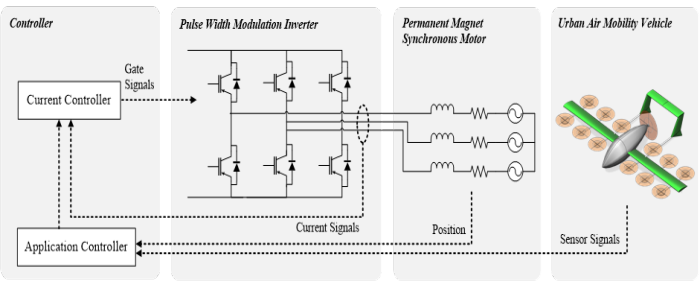
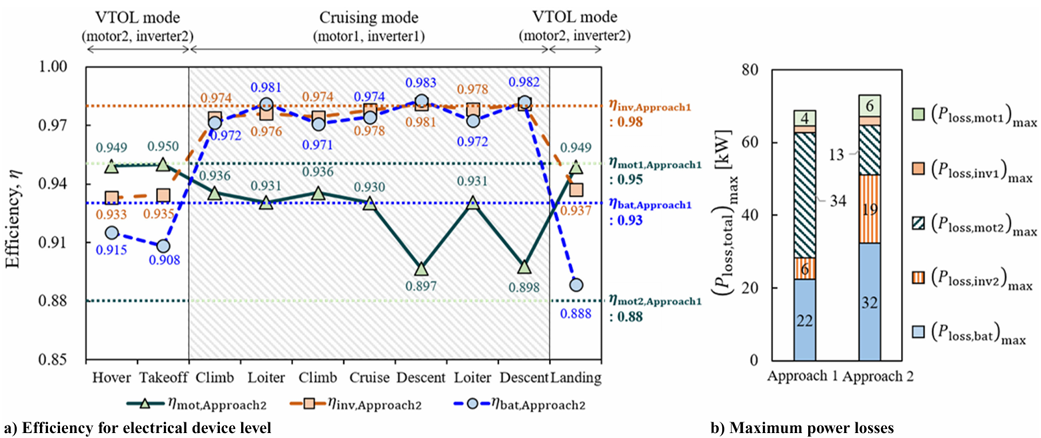
Battery System
A realistic battery system analysis and design are necessary to increase the reliability of the aircraft sizing results. For the realistic battery system analysis and design, the battery’s three key constraints must be considered: the battery’s maximum depth of discharge, C-rate, and temperature. Furthermore, the battery’s thermal management method must be considered in the design process. Therefore, air-cooled and liquid-cooled battery system design methods have been developed to consider all these factors. Based on these methods, the battery’s voltage, C-rate, and temperature for each mission segment can be accurately predicted, and the cooling effect of the thermal management method can also be reflected. In the case of air cooling, the flight analysis can reflect the additional drag caused by the cooling effect through ram-air. In the case of liquid cooling, the increased weight and required power due to additional components can be reflected in the design process.
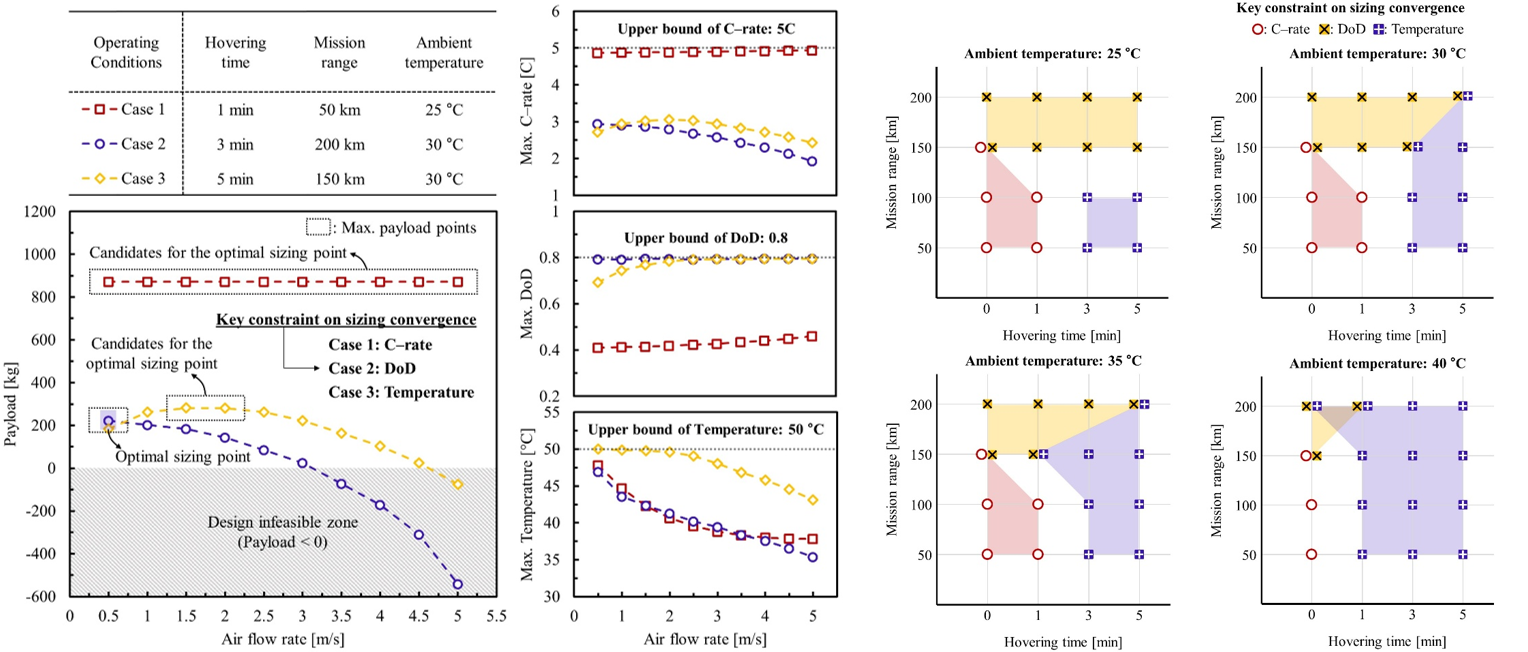
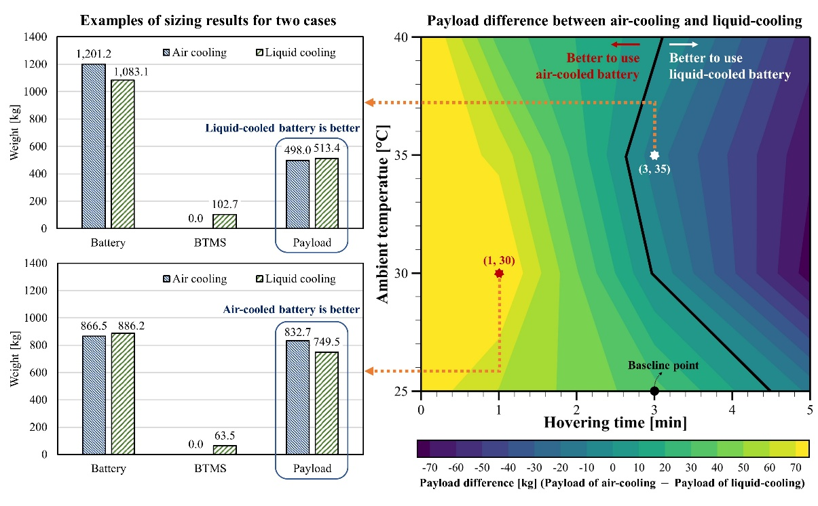
Fuel cell-Battery Hybrid System
Batteries, the primary power source for electric aircraft, have critical drawback of low specific energy. To address this limitation, a fuel cell–battery hybrid system has been proposed as an alternative. It employs fuel cells as the primary power source and draws additional power from the battery when the fuel cell power is insufficient. This hybrid propulsion system is expected to offset the limitations of each component while maximizing their respective advantages. To assess whether an eVTOL aircraft based on such a propulsion system is feasible—and to evaluate its potential performance—a reliable fuel cell–battery hybrid system design method is essential. Accordingly, a design methodology that accounts for the operational characteristics of both batteries and fuel cells has been developed. This methodology enables the system to reflect performance variations of the battery and fuel cell across different mission segments and allows for the estimation of component weights, including the Balance of Plant (BoP) of the fuel cell system.
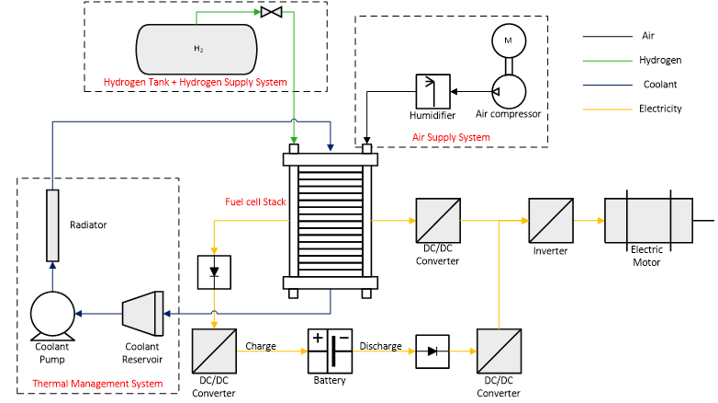
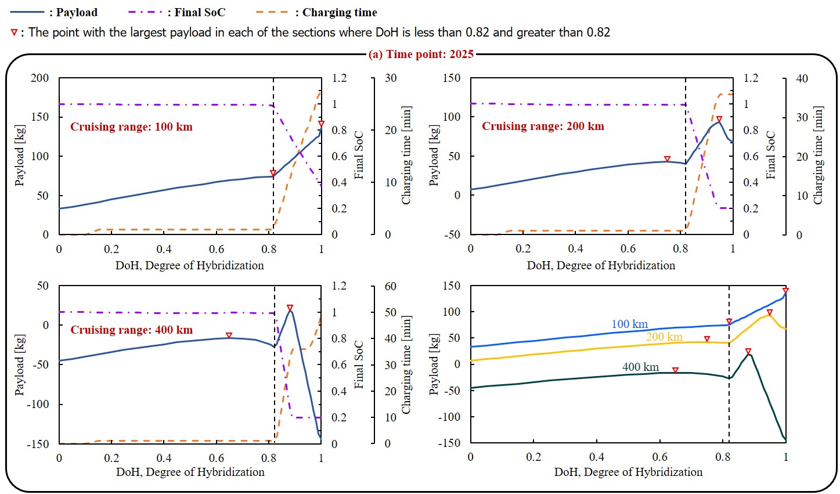
Turboeletric system
As advancements in battery and motor technologies have enabled the electrification of aircraft, particularly via Distributed Electric Propulsion (DEP), a wide range of Advanced Air Mobility (AAM) configurations has become feasible. Electrification methods can largely be categorized into the Full Electric Propulsion System (FEPS) and the Hybrid Electric Propulsion System (HEPS).
While FEPS enables zero-emission flight, its practical application is limited by the low energy and power density of current electrical energy sources, often resulting in excessive energy storage weight and limited payload capacity. In contrast, HEPS combines internal combustion engines with electrical sources, offering a balanced approach that reduces fossil fuel dependence while addressing the limitations of FEPS.
Among HEPS configurations, the turboelectric architecture is the most fundamental, converting mechanical energy from a turboshaft engine into electricity using a generator and rectifier. This structure serves as a foundational configuration that can be extended to more complex HEPS architectures, offering scalability.
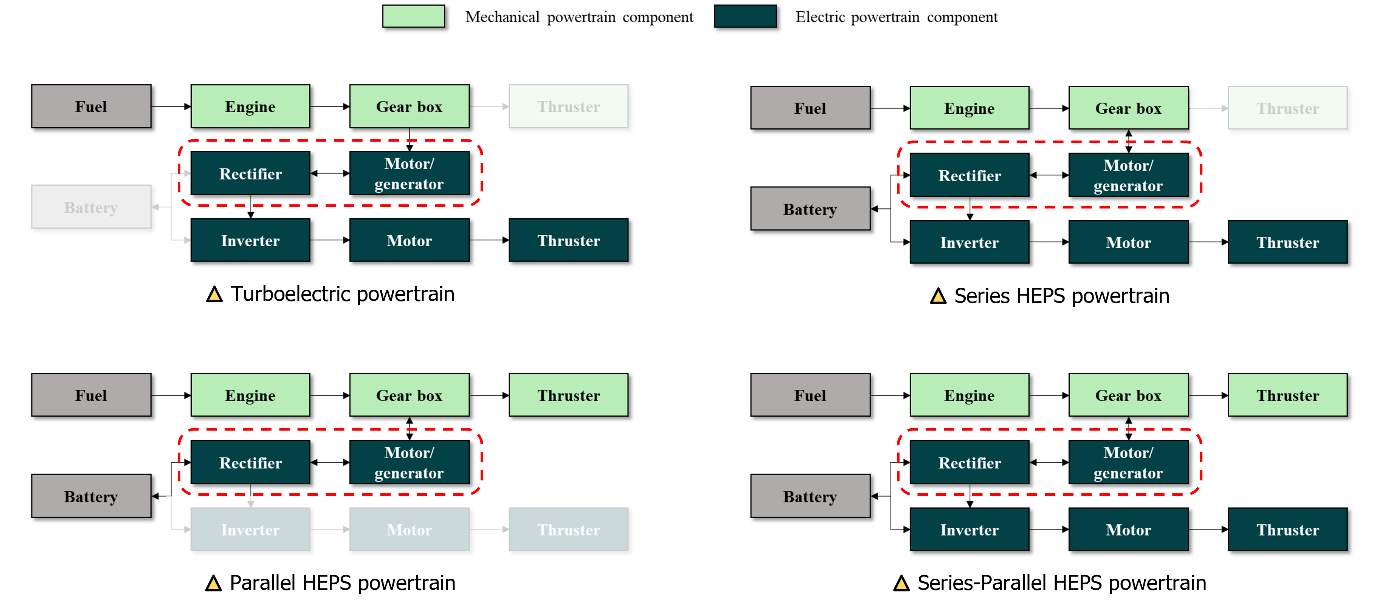
However, the overall system performance is highly influenced by the electrical characteristics and control strategies of the generator and rectifier, which can vary significantly with flight conditions. Therefore, accurate performance analysis of turboelectric systems is essential to improve design feasibility and ensure reliable operation in AAM applications.
To address these requirements, we developed sizing and analysis modules for the generator and rectifier by accounting for the above characteristics, and implemented them into our conceptual design tool, RISPECT+. In addition, the analysis methodology for the associated turboshaft engine was improved. These enhancements increased the accuracy of sizing and performance analysis for turboelectric systems, which form the foundation of HEPS architectures.
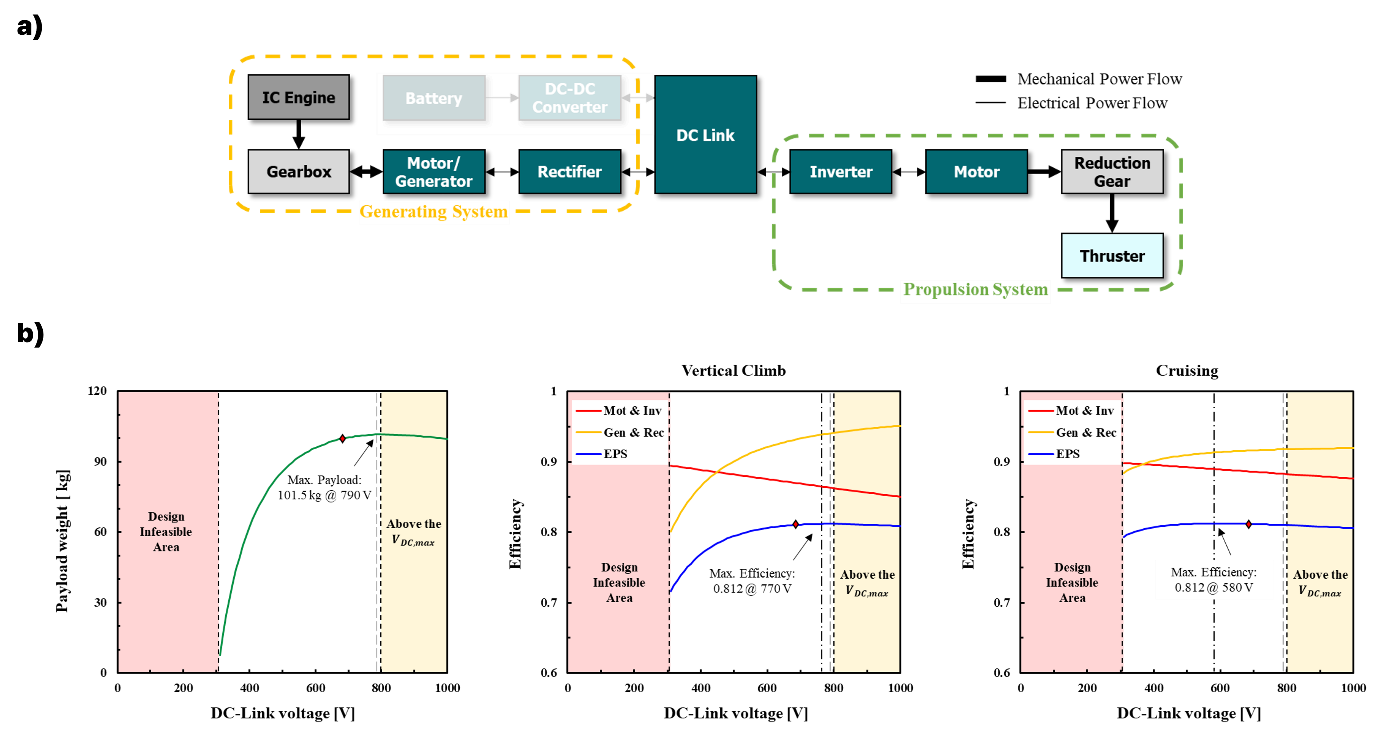
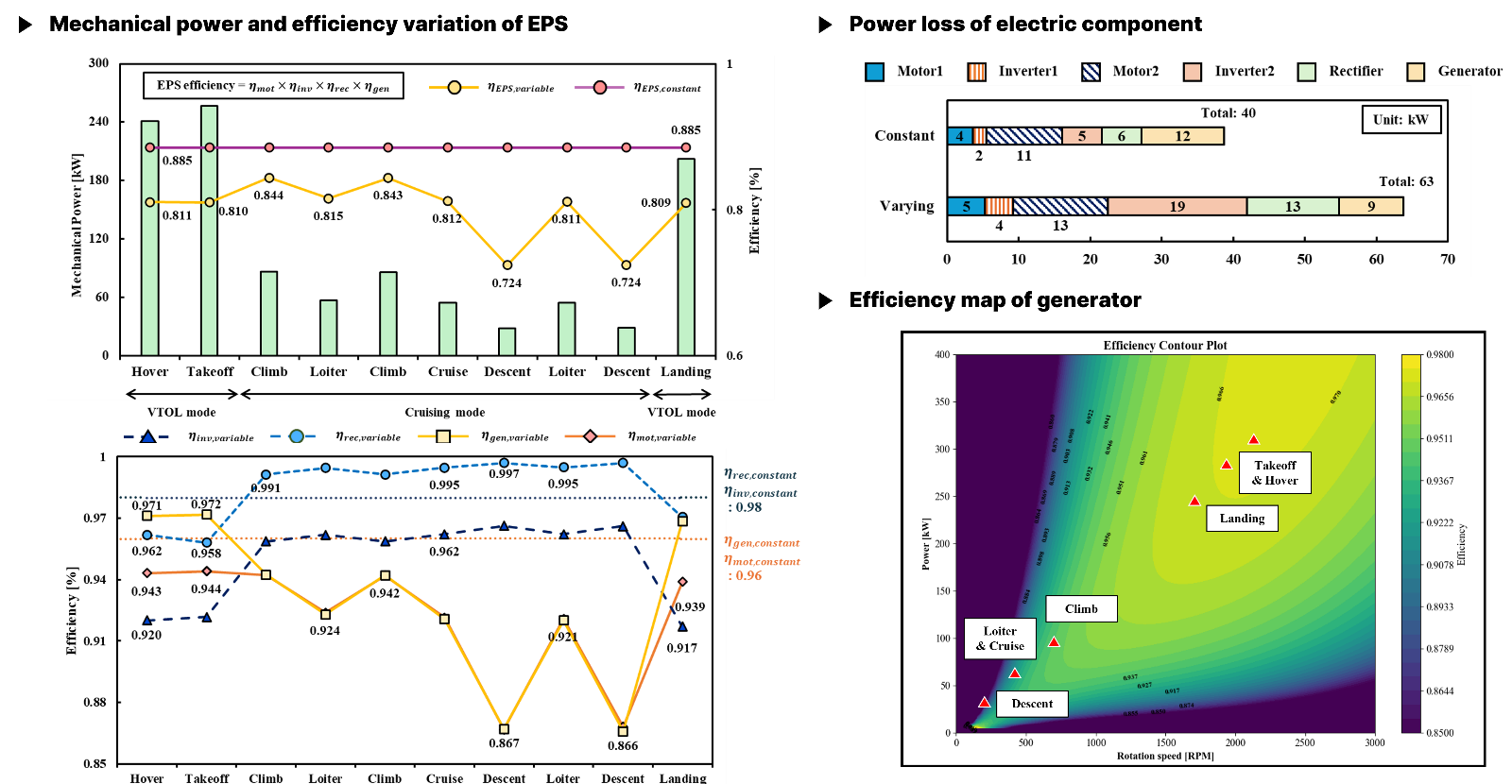
Reference
[1] Lee, D, and Yee, K., “Novel electric propulsion system analysis method for electric vertical takeoff and landing aircraft conceptual design.” Journal of Aircraft 61.2 (2024): 375-391.
[2] Park, J., Jeong, T., & Yee, K. (2025). Refined air-cooled battery sizing process for conceptual design of eVTOL aircraft. Applied Energy, 377, 124567.
[3] Park, J., & Yee, K. (2025). Development of Liquid-Cooled Battery System Sizing Method for eVTOL Aircraft. In AIAA SCITECH 2025 Forum (p. 0222).
[4] Park, J., Lee, D., Lim, D., & Yee, K. (2022). A refined sizing method of fuel cell-battery hybrid system for eVTOL aircraft. Applied Energy, 328, 120160.
[5] Cho, J., Lee, D., Park, J., Jeong, T., & Yee, K., “Improved Turboelectric System Modeling for Conceptual Design of Vertical Take Off and Landing Aircraft” Journal of the Korean Society for Aeronautical & Space Sciences, 2025, 53(1), 63-76.
[6] Cho, J., Lee, D., Park, J., Jeong, T., & Yee, K. (2024, October). Improved turboelectric system modeling for HEPS aircraft conceptual design. In Asia Pacific International Symposium On Aerospace Technology (APISAT 2024) (pp. 1571-1574). Adelaide, South Australia: Engineers Australia.